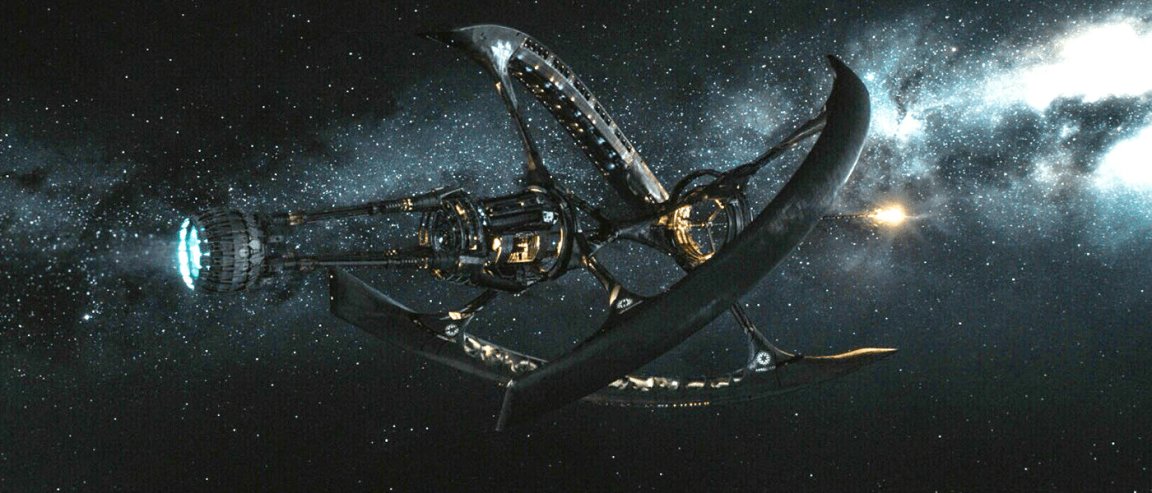
A Vision of the Future?
Though essentially a love story [spoiler!], the film Passengers is set inside the starship Avalon, a futuristic interstellar spaceship carrying more than 5,000 passengers for a 120-year journey to a distant, habitable planet called Homestead II. These space colonists had to be put in hibernation in order to survive the journey, with the Avalon traveling via an intelligent autopilot, at half the speed of light.
The starship Avalon certainly doesn’t look like any ship that we have at present. Okay, it looks like an uber futuristic version of the ISS. But how much of the Avalon reflects real world science? Speaking to Space.com, a bunch of space travel experts weighed in on just how much of the technology seen in Starship Avalon can be real.
Building a Real Life Avalon
The Avalon is huge. So, most probably, it wasn’t built on Earth but rather in space. NASA physicist and science fiction author Geoffrey Landis thinks that it would have been built mostly in space, relying on space mining. Actual space mining is not so far off in the future, it would seem, but we are slowly getting there. A couple of companies are already working on the prospect—Deep Space Industries and Planetary Resources—with plans to scout nearby asteroids to learn about their composition. They are also studying how to send spacecraft to these potential space mines.

Landis believes that this would all be very possible in the near future. “In the long term, if we’re going to build these enormous habitats, we are going to have to build them from material in space,” he said. “That’s a very feasible idea. There’s literally millions of asteroids out there from which we could harvest materials without having to drag it out of the gravity well of the Earth.”
Another aspect to consider is generating gravity aboard the ship, and Landis thinks that the Avalon uses its spin to generate gravity artificially.
Long-Distance Hibernation
The film shows pods and pods of people in a prolonged state of hibernation—as long as 120 years—to survive their space exodus. This kind of stasis technology, however, doesn’t yet exist, although we do have ways of inducing coma that can last for a couple of days.
There is a company working on developing a similar kind of technology, one that can induce stasis in human beings much longer than what’s currently possible. This company is called SpaceWorks, and according to its COO, aerospace engineer John Bradford, induced stasis is theoretically possible, given that some mammals are known to be capable of long hibernation. SpaceWorks is working on developing a technology that can induce a similar state of hibernation in humans.
It’s different from what’s in Passengers, however, as “[w]e’re not trying to extend the human lifetime,” Bradford said. “We’re trying to put people in a small container to minimize the mass and power requirements, and the consumables [during spaceflight].” SpaceWorks has been working on the project since it received a NASA Innovative Advanced Concepts (NIAC) grant in 2015.

Fueling Interstellar Space Travel
Currently, we don’t really have technology yet that will allow for faster interstellar travel. Several options are being explored, like using nuclear fusion and the impossible EM drive. But both of these remain theoretical, at best—although the EM drive remains theoretically questionable. Nuclear fusion, on the other, if made possible would present logistical problems of constructing big enough reactors in space.
Other potential technologies are also being explored. A project under a NIAC grant is testing the idea of using lasers. University of California physics professor Philip Lubin is working on developing a concept known as Directed Energy Propulsion for Interstellar Exploration, which would use laser photons reflected on mirrors to generate propulsion in space. The idea is to generate enough propulsion to push a spacecraft to move through space at a fraction of the speed of light, similar to the starship Avalon.
Another idea involves building antimatter engines. “The energy [an antimatter engine] generates is very pure in that it generates a lot of photons when matter reacts with antimatter,” co-founder and president of Icarus Interstellar Andreas Tziolas told Space.com. “All of the matter is annihilated and it turns into pure photonic energy. However, the photons themselves are hard to capture.”
So, the bottom line is that a spaceship of the magnitude and sophistication of Avalon is theoretically attainable; it’s beyond the reach of present technology, but there’s nothing involved that requires a contravention of the known laws of physics. All that’s needed is a space-based economy to support the construction of such a monstrous interstellar “ark,” and the large-scale implementation of space propulsion technologies that are already on the drawing board.
Now all we need do is discover a cause challenging and urgent enough to provoke our ingenuity, and muster the willpower to just build the darned thing.